Timur: Brutal Military Leader And His Desire To Conquer But Not To Rule
A. Sutherland - AncientPages.com - Historical records confirm that the greatest military campaigns of conquest were often accomplished by the robust nomadic and semi-nomadic peoples inhabiting Central Asia.
Their horsemen were perfectly trained and could defeat the armies of any settled civilization. These Asian fighters went to battle with no fear because they were inspired by their most skilled leaders such as the Mongol Genghis Khan or the Tatar Timur, also known as Timur the Lame or Tamerlane.
Today’s article is devoted to Timur, who became one of the most successful military leaders in history.
Timur Rose To Power Despite A Serious Physical Disability
Timur was a conqueror born into a tribe of horsemen in the area of Central Asia that is today Uzbekistan and Tajikistan. As a young man, Timur led a band of lawless fighters who robbed traveling merchants and engaged themselves in problems with local tribes.
Left: Timur -Turco-Mongol Conqueror. Source ; Right: A Timurid-era illustration of Timur.
One day, he suffered an arrow wound that left his right arm and leg partially paralyzed. He was able to ride a horse but he could only walk short distances, otherwise needing to be carried.
His crippling injuries did not stop Timur from rising up and being one of the most feared leaders of the 14th and early 15th centuries.
Sophisticated, Intelligent And Very Cruel Ruler
Timur spoke Persian, Mongolian, and Turkish. He was a learned ruler, who respected scholars, enjoyed their company much, and was generous to them.
His physical strength was obviously insufficient but his mental capabilities were perfect. He was described as very intelligent; he was a first-class chess player and his brain was capable to come up with the best military strategies.
He is regarded as a military genius, a highly skilled strategist with an unusual ability to work within a highly fluid political structure to win and maintain a loyal following of nomads during his rule in Central Asia.
He eventually came to rule Samarkand and Balkh, known to the Ancient Greeks as Bactra, giving its name to Bactria, a noble and great city as described by Marco Polo, an Italian explorer, merchant, and writer.
Timur’s successful military conquest was motivated when his fellow nomadic warrior, Tokhtamysh, had reformed the Mongol Golden Horde and plundered northern Persia in 1385.
Timur Defeated His Rival And Conquered Others
Timur’s response was to attack and conquer his rival and it happened. The two of them confronted their powerful armies. The final battle took place at the River Terek in 1395 and Timur was victorious. His army significantly devastated Tokhtamysh’s territory and in consequence, the Golden Horde ceased to exist.
It was for other campaigns and soon Baghdad and Shiraz were destroyed. In 1387, Timur entered Isfahan and the city immediately surrendered; however, inhabitants of Isfahan did not like high taxes, and the collectors sent by Timur were killed along with some of his soldiers.
Timur's mausoleum is located in Samarkand, Uzbekistan. Source
In response, Timur ordered the massacre of the city's citizens; the death toll was estimated between 100,000 and 200,000. An eye-witness counted more than 28 towers constructed of about 1,500 heads each.
Timur’s Fearless Army
His soldiers included mounted and highly skilled bowmen. They were well-organized; each the so-called ‘tuman’ (ten thousand men) were divided into thousands, hundreds, and tens. There was strong discipline and Timur controlled his army’s operations, such as building pontoon bridges and the soldiers’ camps.
As an army leader, he was very cruel and it is said he expected his soldiers to be the same.
Timur’s very successful military operations were not systematically planned but were rather based on surprising attacks.
Timur Was Reckless And Brutal
For approximately four decades, he attacked and conquered Baghdad, Damascus, and Delhi, where his brutality became particularly evident. He ordered 100,000 Indian prisoners to be killed. It is said this was done in one day. Then, there were other Arab, Georgian, Persian cities sacked and completely destroyed and their populations massacred. His armies reached the borders of Western Europe but his greatest desire was to conquer China.
The great conqueror was still unsatisfied. He fought many successful battles, expanded his territories, and finally advanced to the Aegean, where he seized a Christian crusader castle at Izmir, Turkey, before returning to Samarkand as victorious.
He still wanted more; he wanted to defeat the Ming Empire in China.
Unfortunately for him, it never happened because he died two years later, in 1405 during a winter campaign with his ambitious quest unfulfilled.
Written by – A. Sutherland - AncientPages.com Senior Staff Writer
Copyright © AncientPages.com All rights reserved. This material may not be published, broadcast, rewritten or redistributed in whole or part without the express written permission of AncientPages.com
Expand for referencesReferences:
Stier R. Holms B. S. Tamerlane The Ultimate Warrior
Marozzi J. Tamerlane: Sword of Islam, Conqueror of the World
Payne R. The World of Art
More From Ancient Pages
-
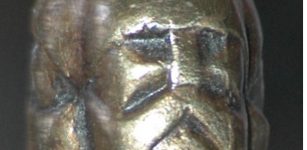 Triglav (Trzygłów) – Powerful Three-Headed Slavic God Of Vigilance, Sea Storms Who Supervised Sky, Earth, And Underworld
Featured Stories | Nov 11, 2019
Triglav (Trzygłów) – Powerful Three-Headed Slavic God Of Vigilance, Sea Storms Who Supervised Sky, Earth, And Underworld
Featured Stories | Nov 11, 2019 -
 Ancient DNA Study Reveals Surprise About Britain’s Bronze Age – What Happened On The Orkney Islands?
DNA | Mar 31, 2022
Ancient DNA Study Reveals Surprise About Britain’s Bronze Age – What Happened On The Orkney Islands?
DNA | Mar 31, 2022 -
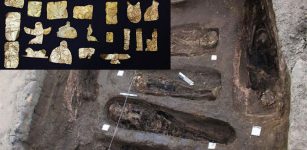 Unearthed Ancient Egyptian Tombs At Tel El-Deir Will Rewrite The History Of Damietta – Archaeologists Say
Archaeology | Dec 27, 2022
Unearthed Ancient Egyptian Tombs At Tel El-Deir Will Rewrite The History Of Damietta – Archaeologists Say
Archaeology | Dec 27, 2022 -
 Sacred Helgafell Mountain And The Story Of Torolv Mostrarskjegg
Myths & Legends | Mar 13, 2024
Sacred Helgafell Mountain And The Story Of Torolv Mostrarskjegg
Myths & Legends | Mar 13, 2024 -
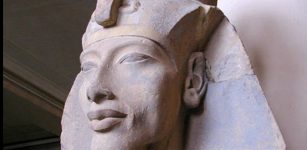 Akhenaten: Unorthodox Ruler Who Had Only One God
Featured Stories | Mar 28, 2017
Akhenaten: Unorthodox Ruler Who Had Only One God
Featured Stories | Mar 28, 2017 -
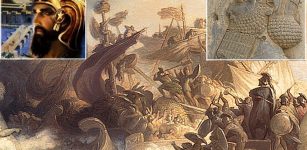 Achaemenid Empire Was The World’s Largest Ancient Empire
Featured Stories | May 24, 2021
Achaemenid Empire Was The World’s Largest Ancient Empire
Featured Stories | May 24, 2021 -
 Feud Between The Medici And The Borgia Families – What Caused The Renaissance Clash?
Featured Stories | Mar 5, 2019
Feud Between The Medici And The Borgia Families – What Caused The Renaissance Clash?
Featured Stories | Mar 5, 2019 -
 Cynane: Talented Female Military Leader Assassinated While Giving A Speech
Featured Stories | Mar 5, 2019
Cynane: Talented Female Military Leader Assassinated While Giving A Speech
Featured Stories | Mar 5, 2019 -
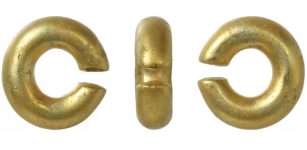 ‘Incredibly Mysterious’ Bronze Age Gold Penannular Ring Found In Norfolk
Archaeology | Apr 24, 2023
‘Incredibly Mysterious’ Bronze Age Gold Penannular Ring Found In Norfolk
Archaeology | Apr 24, 2023 -
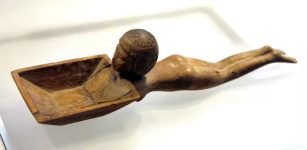 Intriguing And Suprising Ancient History Of Swimming That Started Over 100,000 Years Ago
Featured Stories | Dec 28, 2022
Intriguing And Suprising Ancient History Of Swimming That Started Over 100,000 Years Ago
Featured Stories | Dec 28, 2022 -
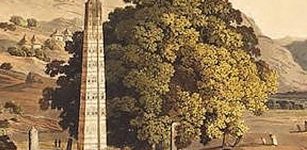 Ancient African Empires’ Impact On Migration Revealed By Genetics
Archaeology | Mar 31, 2023
Ancient African Empires’ Impact On Migration Revealed By Genetics
Archaeology | Mar 31, 2023 -
 Khutulun – Great Female Warrior Of The Mongol Empire And Cousin Of Kublai Khan
Featured Stories | Jul 25, 2018
Khutulun – Great Female Warrior Of The Mongol Empire And Cousin Of Kublai Khan
Featured Stories | Jul 25, 2018 -
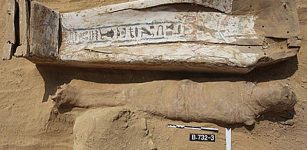 2,000-Year-Old Poorly Preserved Mummies Unearthed Near Saqqara’s Pyramid of Djoser
Archaeology | Jul 3, 2019
2,000-Year-Old Poorly Preserved Mummies Unearthed Near Saqqara’s Pyramid of Djoser
Archaeology | Jul 3, 2019 -
 Evolution Of Tree Roots Led To Ancient Mass Extinctions – Geologists Say
Archaeology | Nov 11, 2022
Evolution Of Tree Roots Led To Ancient Mass Extinctions – Geologists Say
Archaeology | Nov 11, 2022 -
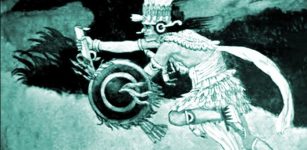 Tezcatlipoca: Enigmatic Aztec God Who Looked Inside People’s Hearts And Observed Their Deeds On Earth
Aztec Mythology | Jul 22, 2021
Tezcatlipoca: Enigmatic Aztec God Who Looked Inside People’s Hearts And Observed Their Deeds On Earth
Aztec Mythology | Jul 22, 2021 -
 Dark History Of Pömmelte, The German Stonehenge – What Can The Nebra Sky Disc And Archaeology Reveal?
Archaeology | Jul 3, 2018
Dark History Of Pömmelte, The German Stonehenge – What Can The Nebra Sky Disc And Archaeology Reveal?
Archaeology | Jul 3, 2018 -
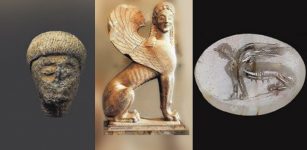 Rare Sphinx Seal Belonging To Roman Emperor Discovered In India Confirms Existence Of Legendary Muziris
Archaeology | Oct 1, 2020
Rare Sphinx Seal Belonging To Roman Emperor Discovered In India Confirms Existence Of Legendary Muziris
Archaeology | Oct 1, 2020 -
 LIDAR Data Helped To Discover Unexplored Region Of Maya World In Campeche, Mexico
Archaeology | Oct 29, 2024
LIDAR Data Helped To Discover Unexplored Region Of Maya World In Campeche, Mexico
Archaeology | Oct 29, 2024 -
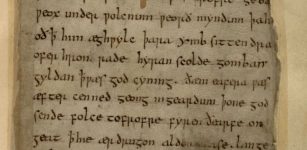 “Beowulf” – Old English Poem Was Probably Written By A Single Author – New Study
Archaeology | Apr 17, 2019
“Beowulf” – Old English Poem Was Probably Written By A Single Author – New Study
Archaeology | Apr 17, 2019 -
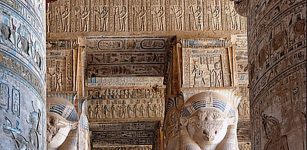 Egypt’s Dendera Temple: Second Restoration Phase Is Now Completed
Archaeology | Mar 6, 2021
Egypt’s Dendera Temple: Second Restoration Phase Is Now Completed
Archaeology | Mar 6, 2021


